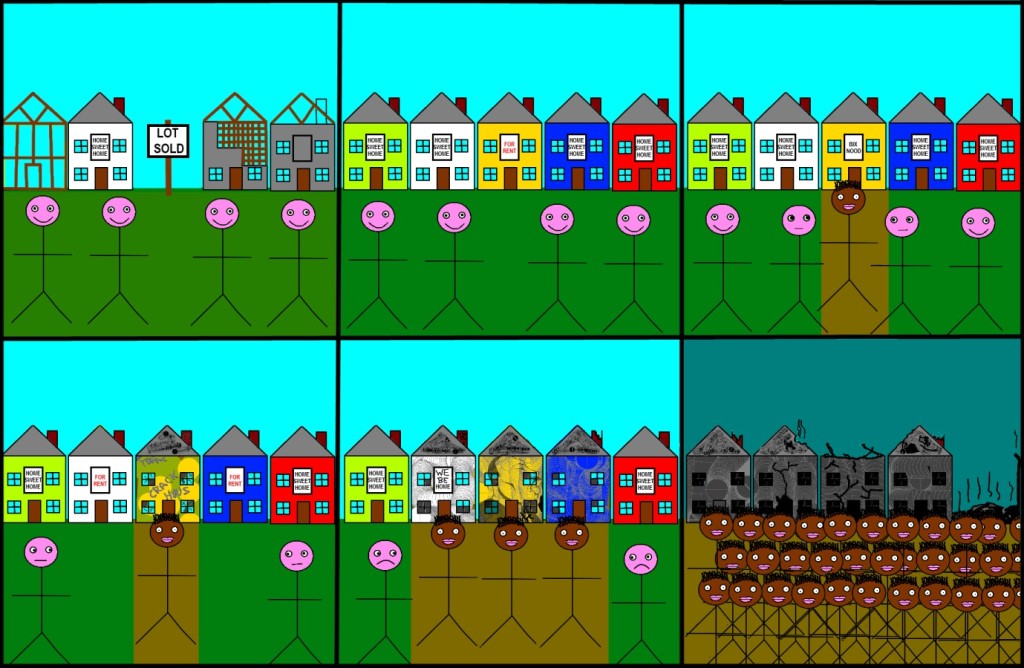Daily Stormer
November 21, 2014

Gentrification is a common and widespread controversial topic and term in urban planning. It refers to shifts in an urban community lifestyle and an increasing share of wealthier residents and/or businesses and increasing property values.
There are a variety of theories trying to explain gentrification, but most of them fail to explain where and why gentrification does not occur.[1] Gentrification phenomena turn up mostly in large cities, which have an urban tradition at least since industrialization.[1] Andrej Holm doubts the scientific useability, as gentrification nowadays stands for a sort of universal metaphor. Hartmut Häußermann assumes a mere slogan without due background.
Gentrification is typically the result of increased interest of external citizens to live in a certain environment. Early “gentrifiers” may belong to low income artists or boheme communities, which increase attractivity and flair of a certain quarter. Further steps are increased investments in a community by real estate development businesses, local government, or community activists and more economic development, increased attractivity of business and lower crime rates. In addition to these potential benefits, gentrification can lead to population migration.
In a community undergoing gentrification, the average income increases. Poorer pre-gentrification residents who are unable to pay increased rents or property taxes are forced out. Gentrification often, if not always includes a negative change of status for the existent population.
 Daily Stormer The Most Censored Publication in History
Daily Stormer The Most Censored Publication in History


